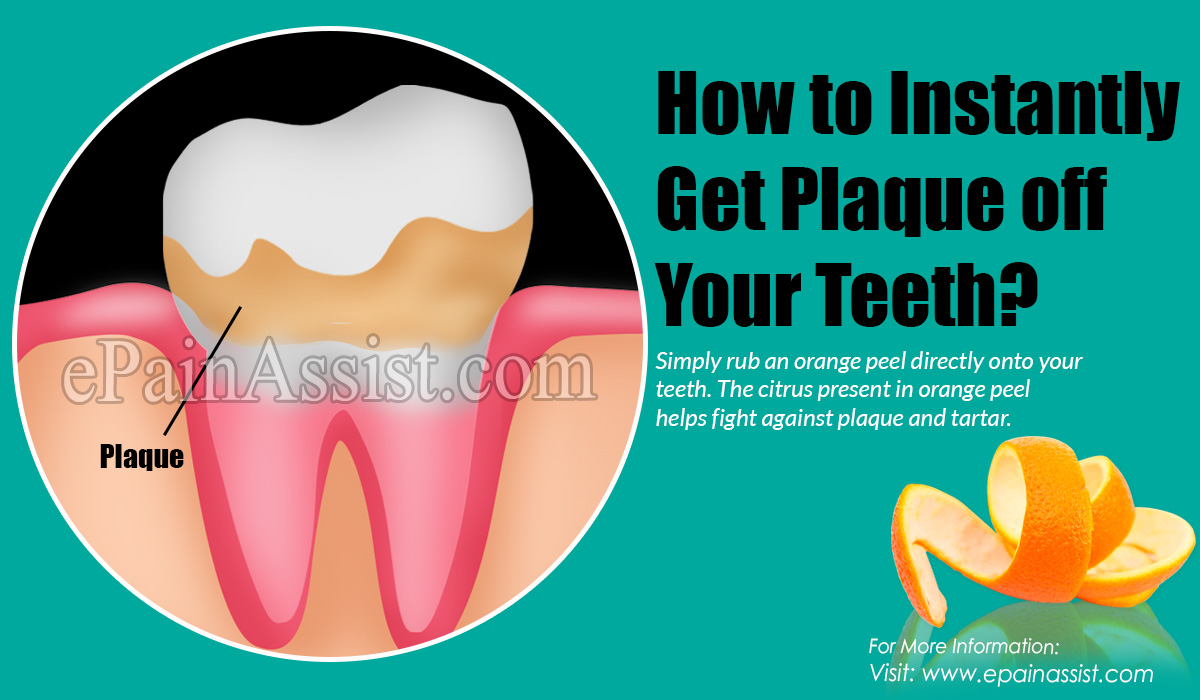Plaque builds up still happens regardless of how well and how regularly you brush and floss. Plaque can lead to tooth decay eventually if not removed in time. You can, of course, have your dentist or dental hygienist to do this for you professionally, but there are many ways in which you can get rid of plaque on teeth fast.
Plaque starts growing on your teeth as dirt and grime, as well as stains, from food and drinks, starts building up on the teeth. This build-up starts feeding the naturally-occurring bacteria in your mouth and these oral bacteria starts to secrete acids that cause the demineralization of enamel. It is necessary for us to protect the enamel of the teeth as enamel erosion can eventually cause you to lose your teeth. It is necessary to remove plaque from your teeth because it may lead to cavities, and eventually it can also cause tooth decay. Usually, your dentist schedules you for plaque removal twice in a year. However, if you want to get rid of plaque on teeth fast, then there are many home remedies that can help you with this.

How to Instantly Get Plaque off Your Teeth?
To get rid of plaque from your teeth in a fast and efficient manner, you can follow the following tips:
Using an Orange Peel to Rub Your Teeth
This is a very simple procedure and gives good results. Simply rub an orange peel directly onto your teeth. The citrus present in orange peel helps fight against plaque and tartar. You can rinse your mouth after 5 minutes. This remedy also works in whitening your teeth.
Try Cleaning With Baking Soda
Baking soda has been used by people for many years now as a cleaning agent for teeth. Due to the fact that baking soda is a bit abrasive, it works in prying away and filing away the leftover debris that gets stuck to the surface of the enamel. Simply take one tablespoon of baking soda and add a pinch of salt to it. Dampen your toothbrush and clean your teeth after dipping it into this mixture. Clean your teeth like you normally would with a toothpaste and then rinse it off thoroughly.
Use tartar Control Toothpaste
If you feel you are more likely to develop tartar patches across your teeth, or if you are worried about the plaque, then using toothpaste that mentions tartar control on the pack is a good idea. These toothpastes contain a mixture of certain ingredients that help fight against tartar and plaque buildup on the teeth. Much such toothpaste also contains triclosan, which is an antibiotic that helps to kill off many bacteria strains.
Use Fluoridated Toothpaste
Most commercially sold toothpaste contains a certain amount of fluoride. Fluoride is important as it strengthens the enamel of your tooth and also lowers your chance of tooth decay that occurs from consumption of acidic foods and drinks. Fluoride is a substance that can actually even help in healing and regenerating your decayed teeth. To boost this process, you should also maintain a healthy diet and stay clear of sugary foods and drinks.
Proper and Sustained Brushing
Well, no surprises here. You have to understand that brushing your teeth is the most effective way for removing plaque from your teeth. Brush properly after each meal, but not immediately after eating. Wait at least half an hour after eating to brush your teeth. This is required so that you can lower your chances of having any tartar patches develop on your teeth. Brush for at least three minutes, applying an even amount of pressure and time to every corner of your mouth.
Conclusion
Using such simple remedies can help you get rid of plaque easily and fast, and also prevent further buildup of plaque and tartar. Take care of your teeth properly and it will save you from lot of toothaches in the future. If you have any doubts about what you can do to further your dental routine, then consulting your dentist is a good idea.
Also Read:
